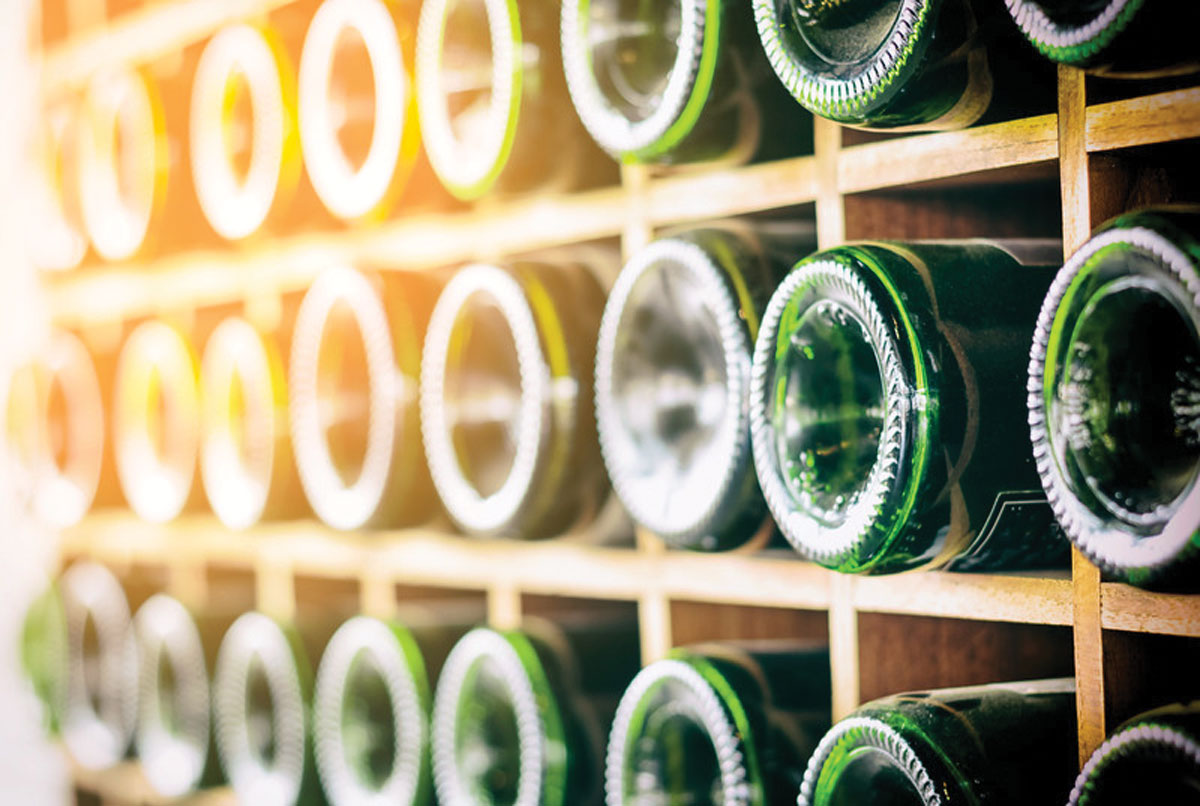Wines for the Ages
In many wine-centric families, one celebrates with a bottle from the year of the birth, anniversary or significant achievement. How do you procure such a bottle without paying the appreciable market price? Buy now and age yourself.
Purchasing wine young and laying it down to age has certain advantages:
• The flavor profile of many age-worthy wines shifts over time. The flavors become more complex and savory, the aromatics turn into a bouquet, and the tannins become fine and silky. This isn’t true of all age-worthy wines, but many wines with aging potential show at least some flavor evolution.
• Do you worry about fine wine as a financial asset? Age-worthy bottles are some of the most reliable investments. Buy bottles at a relatively low cost while they’re still immature, then resell them on the secondary market at peak maturity at a much higher price.
• Aging wine yourself prepares you for future momentous celebrations. When you have a special occasion coming up, you’ll already have a collection of exciting, mature wines to choose from.
When you buy wine for aging, it’s easy to confuse quality with aging potential. Just because a wine is delicious and receives high scores from commentators does not necessarily mean it can age for decades. These grapes stand the test of time:
Vintage Champagne
These age well because they are often quite high in acidity. Although vintage champagne does lose effervescence as it ages, the flavors become nuttier and creamier, a quality that many wine enthusiasts love.
Aging potential: 15+ years for most top-quality champagne houses; 25+ years.
Seek out: Champagne grower Anselme Selosse. “Whether directly or indirectly, he has inspired an entire generation of young winegrowers in the region, and among consumers, his champagnes have become some of the most sought-after wines in the world,” says Peter Liem.
Riesling
With a firm structure and sharp acidity, some of the best Rieslings can age for 100 years or more. Great Rieslings can actually age longer than many red wines, an unusual quality for a white variety. Some have high residual sugar levels, which not only increase aging potential, but also keep the wines balanced and prevent them from tasting too astringent.
Aging potential: 20+ years for top-quality German or Alsatian Riesling.
Seek out: Domaine Zind Humbrecht, one of the great Alsace wine domaines.
Chenin Blanc
So naturally high in acidity that additional residual sugar is often used to provide balance, these perfectly structured wines can last 50 or even 100 years with care and proper storage.
Aging potential: 30+ years in high-quality vintages.
Seek out: Vouvray’s Domaine Huet, the standard-bearer for great, age-worthy Chenin Blanc. The estate produces some of the world’s most compelling white wines, spanning sparkling, dry, semi-dry, and breathtaking dessert styles.
Syrah
Naturally high levels of phenols (tannins and other flavor compounds) work together to form new, more complex compounds, making Syrah taste so concentrated and multifaceted.
Aging potential: 15+ years, depending on the region and the producer.
Seek out: Jean-Louis Chave the Hermitage, arguably the greatest wine made from Syrah in the world.
Mourvedre
A late-ripening, darkly colored, thick-skinned berry that produces long, conical shaped bunches, this grape reaches its best level of ripeness in warm, sunny, dry and even hot climates. It adds tannin and alcohol to wines, as well as red fruits, cassis, spice, olives, herbs, pepper, sweetness and structure.
Aging potential: 20+ years for great Mourvedre producers.
Seek out: Domaine Tempier Bandol. “Pour Lulu” is a tribute to Lulu Tempier, who took over the family farm with her new husband Lucien Peyraud in 1936. Tempier has long been the Bandol to which all others are measured. The 2017 shows earthy aromas of shrubs, leather, cracked pepper and sage.
Pinot Noir
Growers plant vines in locations that are relatively cool in order to keep acidity levels high. They also use techniques like oak barrel aging to increase the aging potential of these wines. Pinot Noir from the relatively cool climate of Burgundy is able to age for much longer than Pinot Noir from California or even Oregon.
Aging potential: 20+ years for top-quality Burgundy.
Seek out: Jacques-Frédéric Mugnier, who produces wines best described as desert island Pinot Noir, truly beloved.
Nebbiolo
Extremely acidic and tannic, this well-structured wine is not very approachable in its youth, but mellows with age.
Aging potential: 20+ years in the case of great Barolo.
Seek out: Recognized around the world, Vietti is one of today’s most celebrated Piedmont wine producers located in the hamlet of Castiglione Falletto in the Barolo zone.
Buying Age-worthy Wine
• Store bottles in a safe place at precise environmental conditions, with careful temperature and humidity regulation. Bottles need to be kept secure from light and vibration. Under these conditions, wine can mature slowly and gracefully without any disruptions.
• Buy full cases of a single vintage whenever possible. This allows you to open one bottle from the case every few years to see how the vintage is maturing. If you find that a vintage is developing faster than you expected, plan to open the bottles soon or resell them on the market before they’re over the hill. Or, you may find that the wine is maturing much more slowly than anticipated. Delay opening your next bottle or wait longer to sell.
• Fine wine rewards patient collectors. When you give your bottles the time they need to mature fully, you’ll see just how rich, delicious and complex these wines can become.




